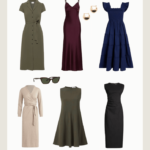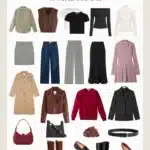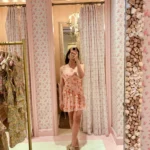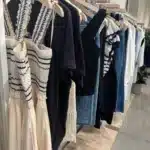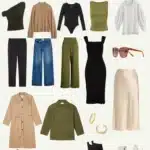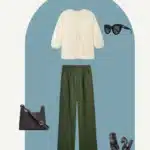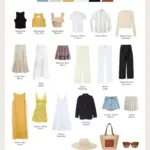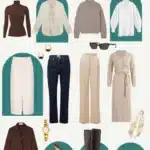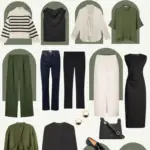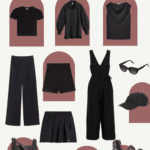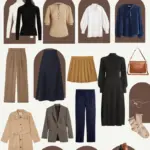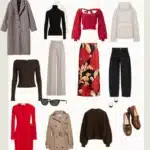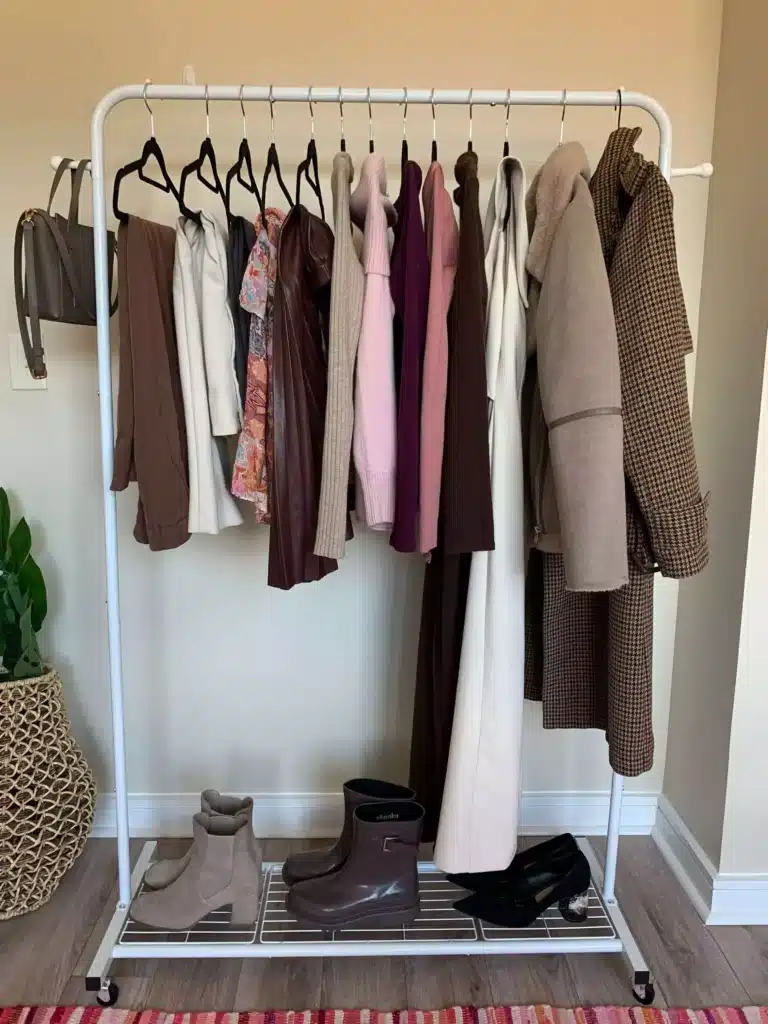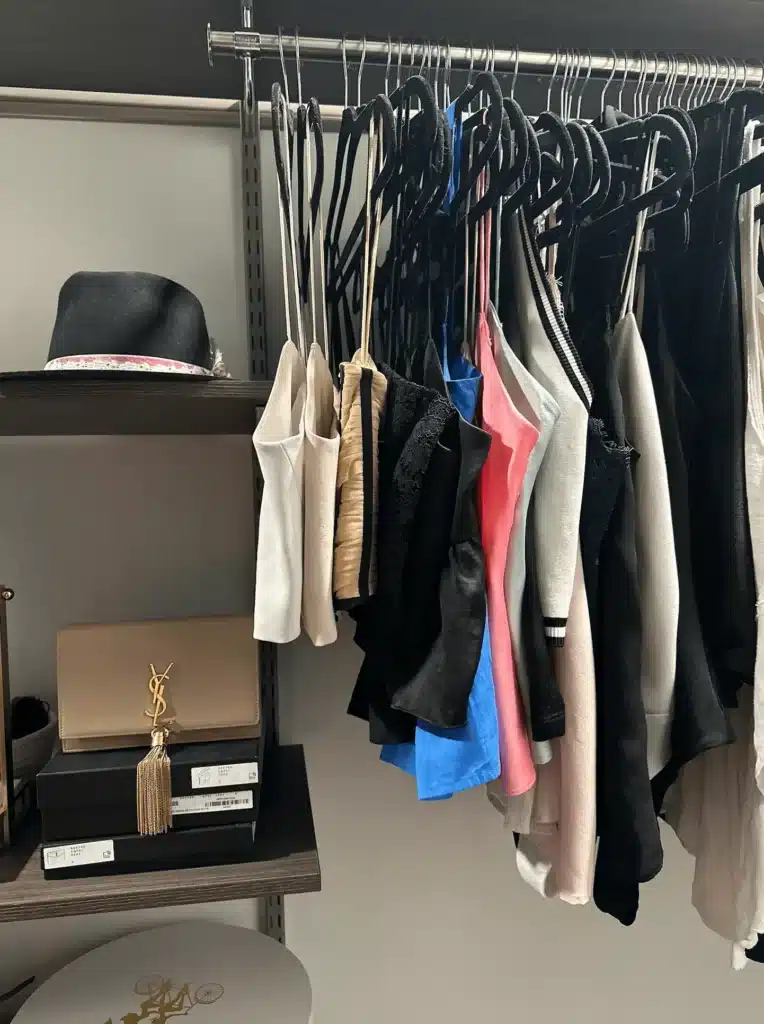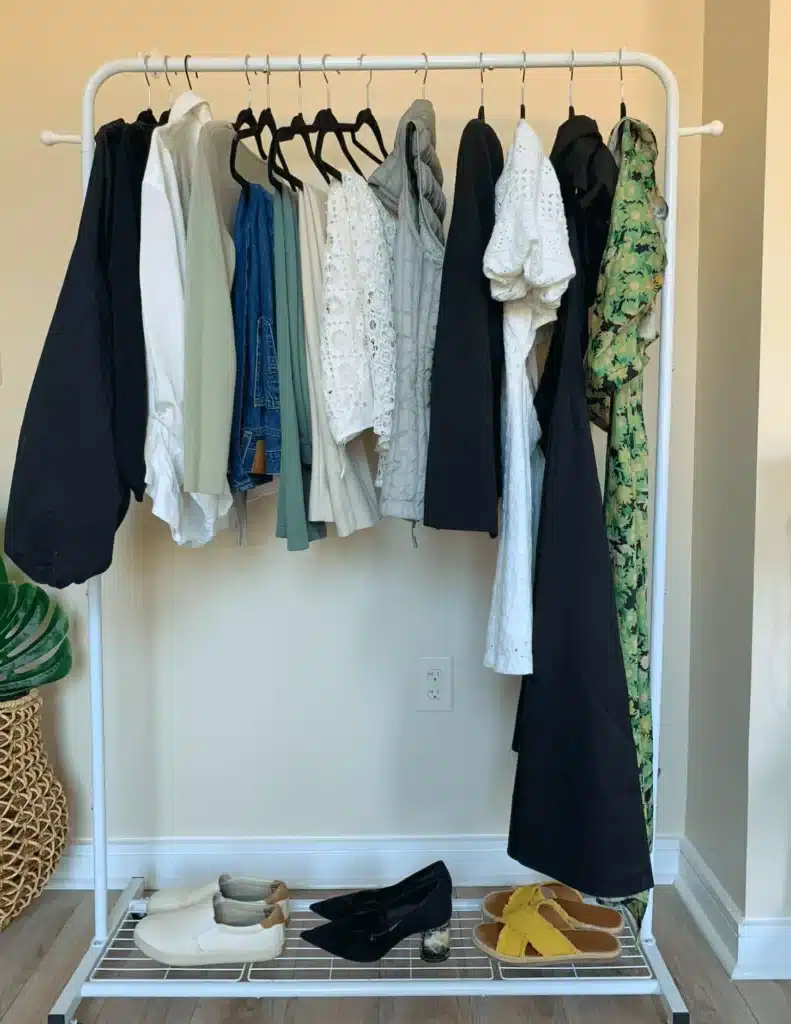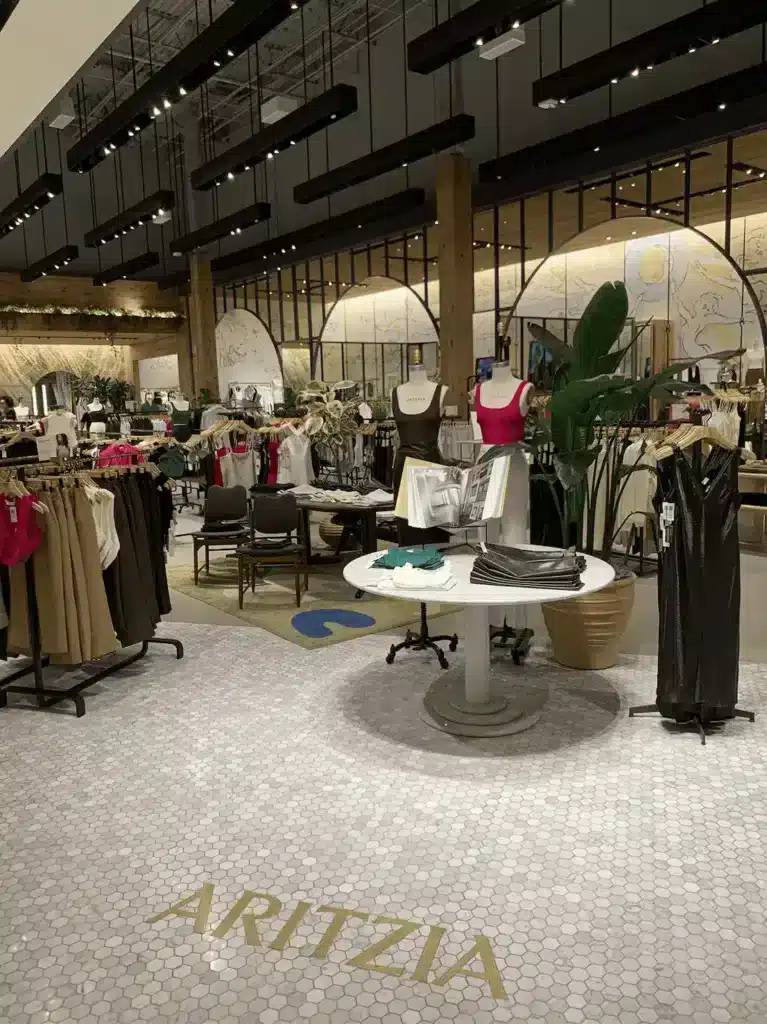How many clothes do I need? If you’re anything like me, you’ve asked yourself this while staring into an overstuffed closet stuffed with items you seldom wear.
We’re not alone in this-most Americans wear a measly 20% of their wardrobes.
While this dilemma ultimately led me to embrace a minimalist capsule wardrobe, your path may look different. Either way, the formula and the advice below will help you build a more intentional closet that suits your unique style.
Let’s begin!
How Many Clothes Do I Need? A Quick Guide
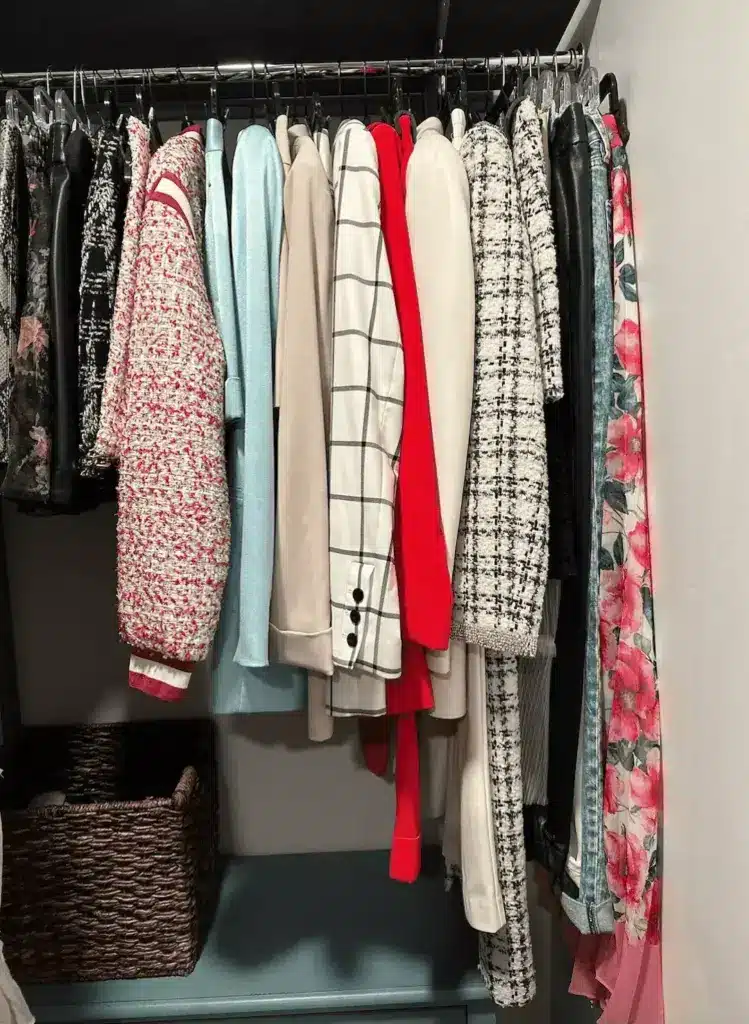
A collection of around 40 pieces (excluding underwear, sleepwear, and workout-specific gear) can provide incredible versatility for a typical lifestyle.
I know-when people ask “how many clothes should I own?” and I respond with this number, they’re often shocked. But the truth is, when you select the right pieces, a smaller wardrobe is sufficient and rewarding.
Here is a sample breakdown of what a beautifully balanced, 40-piece wardrobe can look like.
A 40-Piece Wardrobe: A Balanced Starting Point
Tops: 16 Pieces (~40%)
- The Role: To provide the most variety and personality in your daily outfits.
- A Potential Mix: 5-6 casual tops (t-shirts), 4-5 work-appropriate tops (blouses), and 4-5 sweaters/knits.
Bottoms: 8 Pieces (~20%)
- The Role: To serve as the high-quality, versatile workhorses of your closet.
- A Potential Mix: 2-3 pairs of jeans, 2-3 pairs of trousers, and 2 skirts.
Dresses & Jumpsuits: 4 Pieces (~10%)
- The Role: To provide easy, “one-and-done” outfits for various occasions.
- A Potential Mix: 1 casual day dress, 1 sweater dress, 1 work-to-evening dress, and 1 formal event option.
Outerwear: 5 Pieces (~12.5%)
- The Role: To act as your outfit “finishers,” adapting your core pieces to the climate.
- A Potential Mix: 1 trench coat, 1 blazer, 1 cozy cardigan, 1 casual jacket, and 1 heavy winter coat.
Shoes: 7 Pairs (~17.5%)
- The Role: To cover the main functional categories of your life with style and comfort.
- A Potential Mix: Everyday sneakers, elegant flats/loafers, sandals, ankle boots, weather-specific boots, heels, and one “fun” pair.
This template is a fantastic starting point. But what if you live in a four-season climate? Or work in a creative office with a unique dress code? What if you absolutely love variety, or prefer strict minimalism?
That’s where a generic list falls short. To find the number of clothes that’s perfectly tailored to you, let’s dive into my simple formula below.
A Formula to Calculate How Many Clothes You Need
So much advice about how many clothes a woman should have in her wardrobe can be summarized in two words – it depends. While that’s true, it’s not actionable. That’s why I created the Wardrobe Quotient (WQ), a simple formula to help you pinpoint the ideal range of clothing for your unique life.
First, let’s break down the five key factors that influence your wardrobe size.
1. Lifestyle
Your daily escapades, job demands, and leisurely pursuits all impact how many clothes you need. For instance, a bustling young professional might need a wider range of work blazers and cocktail dresses, while a stay at home mom may focus more on easy to style essentials.
Daily Activities: Consider your regular activities, job, and hobbies.
Assign a Score: On a scale of 1 to 4, how diverse is your lifestyle?
Example: I work from home but attend lots of social events so I sit in the middle with a score of 3.
To Score Yourself
How many different “versions” of you do you need to dress each week?
- Score 1 (The Uniformist): Your daily life is very consistent. You might work from home and have a relaxed social life, or you wear a specific uniform for work. You primarily need one type of clothing.
- Score 2 (The Dual-Lifer): You have two distinct modes, most commonly “work life” and “weekend life.” You need a clear set of professional clothes and a separate set for your off-duty time.
- Score 3 (The Multi-Hyphenate): Your life requires three or more distinct types of clothing. For example: professional work attire, casual weekend wear, and specific outfits for a regular hobby (like fitness, going out, or creative pursuits).
- Score 4 (The Chameleon): Your schedule is highly varied and requires a wide range of dress codes. You might be a frequent traveler, attend numerous different types of social events, or have a job that takes you from the boardroom to a creative studio in the same week.
2. Climate
Seasons change, and so should your wardrobe. If you live somewhere with four distinct seasons, you’ll naturally need more items than someone in year-round sunshine. To avoid an overflowing closet, focus on pieces that can be layered and transition smoothly between seasons.
Local Weather: Think about how the climate affects your clothing choices.
Assign a Score: On a scale of 1 to 4, how much does the season influence your wardrobe?
Example: Living in Chicago, I experienced 4 distinct seasons, so I scored 4.
To Score Yourself
How much does the weather dictate your wardrobe?
- Score 1 (The Steady Climate): You live somewhere with very little temperature variation year-round (Southern California, Hawaii). Your wardrobe doesn’t need to change much with the seasons.
- Score 2 (The Mild & Milder): Your area has two main seasons, like a warm season and a cooler, rainy season, but no extreme weather. You only need a light rotation of items.
- Score 3 (The Three-Seasoner): You experience three distinct seasons, such as a mild winter, a warm spring/fall, and a hot summer. You need a moderate rotation of clothing.
- Score 4 (The Four-Season Pro): You live in a climate with four distinct, strong seasons, including a cold winter with snow. Your wardrobe requires a full seasonal rotation with heavy outerwear and specialized items.
3. Laundry
The little considered factor in selecting your wardrobe size is laundry. The more frequently and easily you can do laundry, the fewer pieces of clothing you need to own.
Washing Frequency: Evaluate how often you do laundry and the convenience of your setup. This factor works a bit differently: the easier your laundry situation, the lower your score should be, because you need fewer clothes to last between washes.
Assign a Score: On a scale of 1 to 4, how easy is it for you to manage laundry? A 1 means laundry is effortless and frequent. A 4 means laundry is a significant, infrequent chore.
Example: I do laundry routinely but travel sometimes interrupts that so I’ll give myself a 2.
4. Style Preferences
Consider your preferred style and how much variety you genuinely crave. Do you prefer a timeless, minimalist look, or is your fashion taste more eclectic and trend-driven?
Personal Style: Consider your preferred style and how much variety you like.
Assign a Score: On a scale of 1 to 4, how eclectic is your fashion taste?
Example: I prefer timeless pieces that can be mixed and matched so I give a score of 2.
To Score Yourself
How much variety do you need to feel like “you”?
- Score 1 (The Uniform Devotee): You are a true minimalist. You have a signature look and feel best in a highly streamlined, consistent wardrobe with very little variation.
- Score 2 (The Timeless Classic): You appreciate a classic, timeless style. You enjoy having a few different outfit formulas but don’t feel the need to chase every new trend. (This is me!)
- Score 3 (The Creative Experimenter): You enjoy fashion and like to experiment with different styles, colors, and trends. Having a good amount of variety to create unique looks is important to you.
- Score 4 (The Style Chameleon): You are a true fashion enthusiast. Your style is eclectic and ever-evolving, and you love having a wide range of pieces to express your creativity differently each day
5. Sustainability
Think about your commitment to eco-friendly practices. Embracing a more sustainable mindset often leads to a smaller, more thoughtfully curated wardrobe.
Sustainability Goals: Think about your commitment to eco-friendly clothing practices.
Assign a Score: On a scale of 1 to 4, how important is sustainability to you?
Example: I am embracing more sustainable practices, including secondhand shopping and clothing rentals, but am not exclusively shopping sustainable brands. So I give a score of 3.
To Score Yourself
- Score 1 (Just Starting Out): You’re interested in sustainability but haven’t made it a primary focus of your shopping habits yet.
- Score 2 (The Mindful Shopper): You are actively trying to make better choices. You might be buying less, choosing higher-quality pieces, or starting to explore secondhand options.
- Score 3 (The Conscious Curator): Sustainability is a key factor in your decisions. You actively seek out ethical brands, prioritize natural fibers, and regularly shop secondhand or use clothing rentals.
- Score 4 (The Sustainable Advocate): This is a core value. Your wardrobe is almost exclusively composed of sustainable, ethical, or secondhand brands. You rarely, if ever, buy from fast fashion.
Seeking sustainability? Browse this ethical capsule wardrobe for inspo.
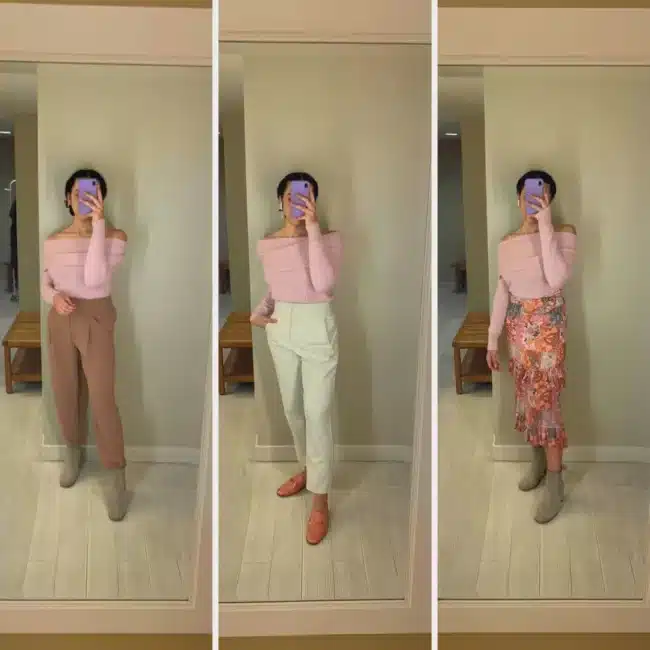
CALCULATE YOUR WARDROBE QUOTIENT (WQ):
Now take your numbers from each category, and add them up to get your Wardrobe Quotient (WQ) aka the amount of clothing that you should own.
- WQ < 15: Minimalist – Focus on essentials | 15-30 pieces
- 15 ≤ WQ ≤ 20: Balanced – Variety for various needs | 40-60 pieces
- WQ > 20: Extensive – Considerable closet flexibility | 70-100 pieces
Example: WQ=3+3+4+2+3=15
I fall into the Balanced Wardrobe category meaning I would do best with 40-60 pieces in my closet. However, I supplement my closet with clothing rentals so I may keep fewer items in my core rotation.
Minimalist Wardrobe – 20-30 pieces of versatile basics
Balanced Wardrobe – 40-60 pieces covering various styles
Extensive Wardrobe – 70-100 or more for diverse choices
Use this wardrobe checklist for small, medium, and large closets.
How Much Clothing Should You Own In Each Category?
So, you’ve calculated your Wardrobe Quotient and have a target number. But how do you translate that total into a functional closet with the right number of shirts, pants, and shoes?
The answer lies in classic stylist ratios. This framework will give you a powerful, logical starting point for building a well balanced wardrobe.
How Many Tops Do I Need?
Tops (shirts, blouses, sweaters) are a pillar of your wardrobe and should make up the largest portion, typically around 40% of your total number.
- In Practice (for a 50-piece wardrobe): This means you would aim for about 20 tops.
- My Tip: A great rule of thumb is to have roughly two tops for every bottom to maximize outfit variety. Your 20 tops could be a mix of 8-10 casual basics (t-shirts, bodysuits), 5-6 work-appropriate pieces (blouses, button-downs), and 4-5 sweaters for layering.
How Many Bottoms Do I Need?
Bottoms (pant, jeans, skirts) are your workhorses and should make up about 20% of your closet.
- In Practice (for a 50-piece wardrobe): This would be10 bottoms.
- My Tip: Focus on your primary life activity. If you work in an office, you might have 4-5 pairs of trousers and 2-3 pairs of jeans for the weekend. If you work from home, that ratio might be reversed.
How Many Dresses & Jumpsuits Do I Need?
These “one-and-done” outfits are the most lifestyle-dependent, typically making up around10% of your wardrobe.
- In Practice (for a 50-piece wardrobe): This would be5 dresses or jumpsuits.
- My Tip: If you rarely wear dresses, 2 versatile options (one casual, one for events) is perfect. If you love them, you can absolutely adjust the ratios, perhaps by having fewer tops and bottoms.
How Many Pieces of Outerwear Do I Need?
Outerwear is your functional, outfit-finishing layer, making up about 15% of your closet.
- In Practice (for a 50-piece wardrobe): This comes out to about7-8 pieces.
- My Tip: This category is directly influenced by your “Climate” score from the WQ. If you scored a 4 (four distinct seasons), you’ll need a full range: a light jacket, a blazer, a casual jacket, a winter coat, etc. If you live in a warm climate, you might only need 2-3 light layers.
How Many Shoes Do I Need?
A well-rounded shoe collection should cover your main life activities and makes up the final 15%.
- In Practice (for a 50-piece wardrobe): This means you would aim for about7-8 pairs of shoes.
- My Tip: Instead of thinking in numbers, think in categories. Aim for at least one pair for each of your core needs: everyday casual (sneakers/flats), work-appropriate (loafers/heels), formal events, weather-specific (boots/sandals), and exercise. For more specific ideas, you can explore my shoe capsule wardrobe.
Closet cleaning? Build a minimalist wardrobe in 7 days with this guide.
Now What? Simplify Your Closet with a Capsule Wardrobe
You know how many clothes you need. Now what? Might I suggest the humble capsule wardrobe?
In case you haven’t heard, a capsule wardrobe is a thoughtfully selected group of essential pieces that can be mixed and matched to create lots of outfits.
In essence, it’s about quality over quantity, ensuring that each item serves a purpose and aligns with your personal style. The goal? To simplify your life, elevate your style, and contribute to a more sustainable approach to fashion.
If you’re interested, I have plenty more to help you along:
How to Build a Capsule Wardrobe You’ll Actually Wear
An Affordable Capsule Wardrobe That’s Still High Quality
Capsule Wardrobe Checklist for Small, Medium, & Large Closets
Read those or pop around the blog for other helpful capsule content!
CLOSET FAQS
If you realize that you have way too many clothes, the next step is to declutter. Here are some options:
The KonMari Method: Spark Joy
Channel your inner Marie Kondo. Hold each item and ask, “Does this spark joy?” If not, it’s time to bid adieu.
Seasonal Sorting
Divide and conquer by organizing your clothes seasonally. This way, you’ll have a clearer view of what you’re working with.
Six-Month Rule
If you haven’t worn it in the last six months, chances are you won’t. Be ruthless – out it goes!
The Hanger Trick
Face all your hangers one way. After wearing an item, flip the hanger. After a few months, donate what remains untouched.
Capsule Wardrobe Experiment
Try a capsule wardrobe for a month. If you don’t miss the sidelined pieces, it’s time to part ways.
One-In, One-Out Rule
Implement a strict policy – for every new item, an old one must go. It keeps your collection in check.
Shoe and Accessories Audit
Apply the declutter drill to shoes and accessories. Bid farewell to the worn-out and uncomfortable.
Remember, the goal is not just decluttering; it’s curating a closet that reflects your style and elevates your looks. Happy decluttering!
While the core Wardrobe Quotient (WQ) formula is universal-lifestyle, climate, and personal style are key for everyone-the final category breakdown is where the main difference lies. The stylist’s ratios are very similar, but the specific pieces will, of course, be different.
A 50-Piece “Balanced” Men’s Wardrobe: A Sample Breakdown
- Tops: 20 Pieces (~40%)
Tops remain the largest category, providing the most variety.
My Tip: For a balanced approach, consider a mix of 8-10 casual tops (quality t-shirts, polos, henleys), 5-7 work-appropriate button-down shirts, and 3-5 sweaters or knits for layering.
- Bottoms: 10 Pieces (~20%)
These are the versatile workhorses of the wardrobe.
A great mix would include 3-4 pairs of jeans (in different washes), 3-4 pairs of chinos or versatile trousers, and 2-3 pairs of shorts for warmer weather or casual occasions.
- Suits, Blazers, & Formalwear: 4-5 Pieces (~10%)
This category replaces “Dresses & Jumpsuits” and covers professional or event-specific needs.
For most men, one well-fitting suit (that can be worn as separates), one or two versatile blazers/sport coats, and perhaps a pair of dedicated formal trousers are sufficient.
- Outerwear: 5-6 Pieces (~12.5%)
This is highly dependent on your climate score.
A versatile collection for a four-season climate might include a light jacket (like a bomber or Harrington), a casual jacket (like a denim or field jacket), a smart overcoat for work, and a heavy winter coat.
- Shoes: 7-8 Pairs (~17.5%)
Cover your core lifestyle needs with quality footwear.
My Tip: Aim for at least one pair for each key category: everyday sneakers, smart casual shoes (like loafers or desert boots), dress shoes for formal occasions, weather-specific boots, and athletic shoes.
From my perspective as a capsule wardrobe creator, a healthy wardrobe is one where:
- You can open your closet and easily put together an outfit you love without decision fatigue.
- Your clothes work for your actual life, not a fantasy one.
- Every piece you own fits you well and makes you feel like the best version of yourself.
- Your closet isn’t filled with unworn items with the tags still on or pieces that no longer fit.
The best way to find your healthy number is to use the Wardrobe Quotient (WQ) formula in this guide. It’s designed to help you find that sweet spot between having enough variety and maintaining a sense of intentionality. For many people, this results in a beautifully functional wardrobe of around 30 to 60 intentional pieces.














